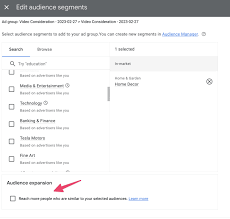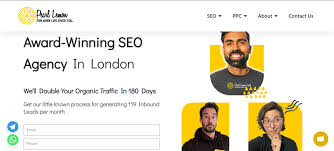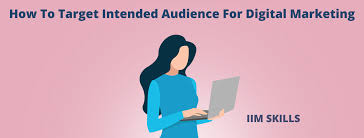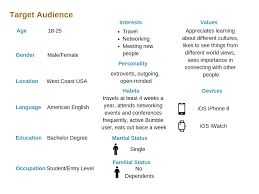Enhancing Audience Targeting with Google Optimize
Optimizing Audience Targeting with Google
Google offers a range of powerful tools and features to help businesses reach their target audience more effectively. One such tool is Google Optimize, which allows businesses to tailor their marketing efforts to specific audience segments for better results.
By using Google Optimize, businesses can create more personalised and relevant experiences for their website visitors. This can lead to higher engagement, increased conversions, and ultimately, improved ROI.
One key feature of Google Optimize is its ability to conduct A/B tests, allowing businesses to compare different versions of their website or landing pages to see which performs better with specific audience segments. This data-driven approach enables businesses to make informed decisions based on real user behaviour.
Another benefit of using Google Optimize is the ability to target specific audiences based on various criteria such as demographics, interests, behaviour, and more. By segmenting audiences and delivering targeted messaging, businesses can increase the likelihood of reaching the right people with the right message at the right time.
Furthermore, Google Optimize integrates seamlessly with other Google tools such as Google Analytics and Google Ads, providing a comprehensive solution for audience targeting and analysis. This integration allows businesses to gain deeper insights into audience behaviour and performance metrics across different channels.
In conclusion, leveraging Google Optimize for audience targeting can significantly enhance a business’s digital marketing efforts. By creating personalised experiences, conducting A/B tests, and targeting specific audience segments, businesses can improve engagement, conversions, and overall marketing performance.
Maximising Success with Google Optimize: 7 Benefits of Audience Targeting
- 1. Enhanced personalisation
- 2. Higher engagement
- 3. Improved conversions
- 4. Data-driven decisions
- 5. Seamless integration
- 6. Audience segmentation
- 7. Performance insights
Challenges of Google Optimize Audience Targeting: Complexity, Time, Cost, and Integration Limits
1. Enhanced personalisation
Google Optimize offers enhanced personalisation by allowing businesses to tailor their marketing efforts to specific audience segments, resulting in more relevant and engaging experiences for users. By understanding the unique preferences, behaviours, and interests of different audience groups, businesses can create personalised messaging and content that resonates with each segment. This level of personalisation not only increases user engagement but also boosts conversions as users are more likely to respond positively to content that speaks directly to their needs and interests. Google Optimize empowers businesses to deliver targeted experiences that drive meaningful connections with their audience, ultimately leading to improved marketing performance and customer satisfaction.
2. Higher engagement
By utilising Google Optimize audience targeting, businesses can achieve higher engagement levels by delivering tailored messaging that resonates with specific audience segments. This personalised approach increases user interaction and engagement as it ensures that the content is relevant and valuable to the targeted individuals. By capturing the attention of the right audience with messages that speak directly to their needs and interests, businesses can foster deeper connections, encourage meaningful interactions, and ultimately drive more positive outcomes.
3. Improved conversions
By utilising Google Optimize audience targeting, businesses can experience a notable increase in conversions, leading to improved return on investment (ROI). By tailoring marketing efforts to specific audience segments, businesses can deliver more relevant and personalised experiences that resonate with their target demographic. This heightened relevance can drive higher conversion rates as audiences are more likely to engage with content that speaks directly to their needs and interests. Ultimately, by optimising audience targeting through Google Optimize, businesses can achieve greater success in converting leads into loyal customers and driving revenue growth.
4. Data-driven decisions
Google Optimize offers businesses the advantage of making data-driven decisions through A/B testing. By conducting A/B tests, businesses can gather valuable insights into user behaviour and preferences, allowing them to make informed decisions on which website or landing page variations resonate best with their audience. This data-driven approach enables businesses to refine their marketing strategies, improve user experience, and ultimately achieve better results by aligning their online presence with the actual needs and preferences of their target audience.
5. Seamless integration
One significant advantage of using Google Optimize for audience targeting is its seamless integration with Google Analytics and Google Ads. This feature provides businesses with a comprehensive solution to effectively reach their target audience. By integrating these tools, businesses can gain valuable insights into audience behaviour, track performance metrics across different channels, and create more targeted and impactful marketing campaigns. This seamless integration streamlines the process of audience targeting and analysis, allowing businesses to make data-driven decisions that lead to improved engagement, conversions, and overall marketing success.
6. Audience segmentation
Google Optimize offers a valuable pro in the form of audience segmentation, allowing businesses to target specific audience segments based on demographics, interests, behaviour, and more. By leveraging this feature, businesses can tailor their marketing strategies to resonate with different groups of users more effectively. This level of granularity in audience targeting enables businesses to deliver more relevant and personalised messaging, leading to improved engagement and conversion rates. By understanding the unique characteristics and preferences of various audience segments, businesses can optimise their campaigns for better results and ultimately drive success in their marketing efforts.
7. Performance insights
Google Optimize offers the valuable benefit of providing performance insights that allow businesses to delve deeper into audience behaviour and performance metrics across various channels. By utilising this feature, businesses can obtain a comprehensive understanding of how different audience segments interact with their content and campaigns. This in-depth analysis enables businesses to make data-driven decisions, refine their targeting strategies, and optimise their marketing efforts for enhanced engagement and conversion rates across multiple channels.
Complexity
One notable drawback of Google Optimize for audience targeting is its complexity. Setting up and using Google Optimize can be challenging, as it demands a certain level of technical expertise. Businesses without the necessary skills or resources may find it difficult to navigate the platform effectively, potentially leading to suboptimal results. The intricate nature of Google Optimize’s features and functionalities can pose a barrier for some users, requiring additional time and effort to fully grasp and utilise its capabilities.
Time-consuming
Implementing audience targeting strategies with Google Optimize may prove to be time-consuming for businesses. Creating and testing different audience segments, analysing data, and adjusting strategies can require a significant investment of time and effort. This process may be particularly challenging for businesses with limited resources or tight deadlines, as it can take time to gather insights and refine targeting approaches to achieve optimal results. The need for ongoing monitoring and refinement further adds to the time commitment required for effective audience targeting with Google Optimize.
Cost
One significant drawback of utilising advanced features of Google Optimize for audience targeting is the potential cost implications. While Google Optimize offers powerful tools to enhance audience targeting, accessing certain advanced features may come at an added expense. Businesses need to consider their budget constraints and weigh the benefits against the extra costs associated with leveraging these advanced functionalities. This cost factor can be a limiting factor for smaller businesses or those operating on tight marketing budgets, potentially hindering their ability to fully utilise the comprehensive audience targeting capabilities offered by Google Optimize.
Limited integrations
One notable disadvantage of Google Optimize for audience targeting is its limited integrations with third-party tools or platforms. While Google Optimize offers seamless integration with other Google products like Analytics and Ads, it may not be as flexible when it comes to integrating with external tools or platforms. This limitation can hinder businesses that rely on specific third-party tools for their marketing efforts, as they may not be able to fully leverage the capabilities of those tools in conjunction with Google Optimize.












